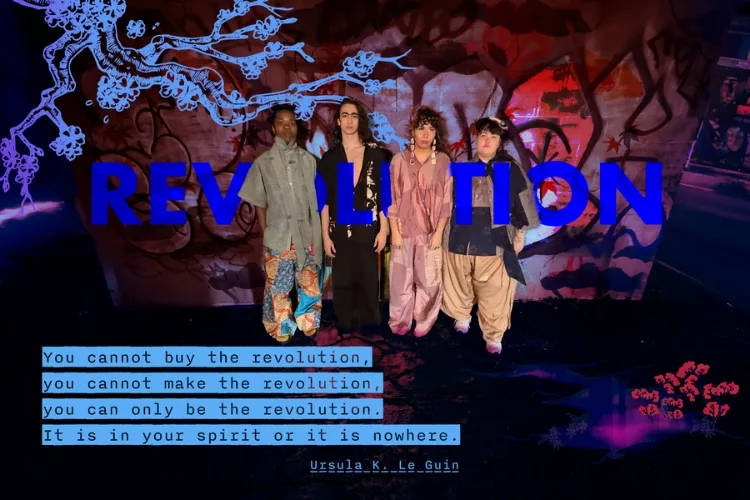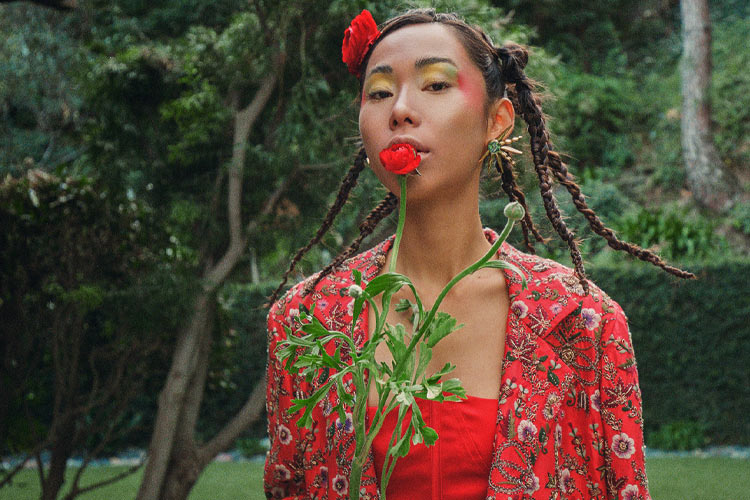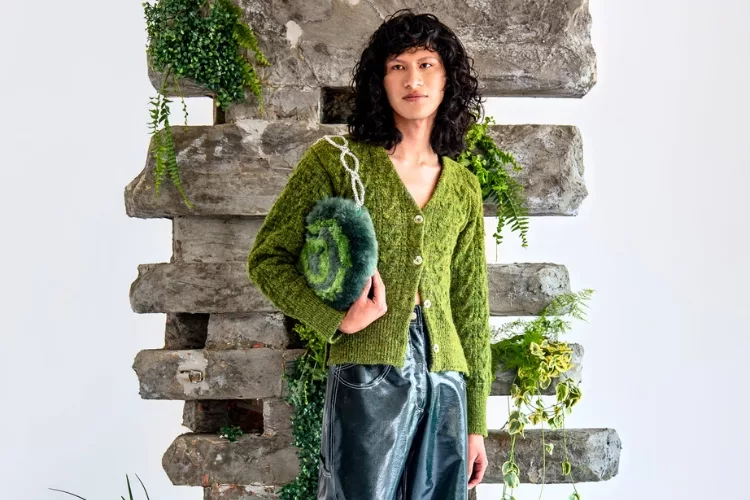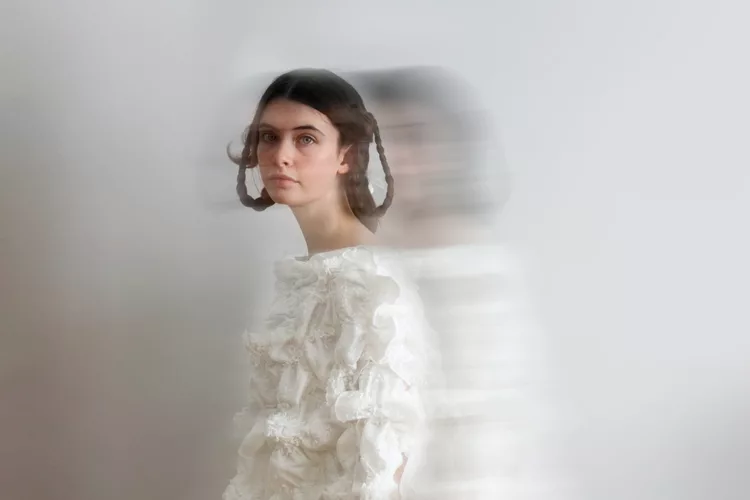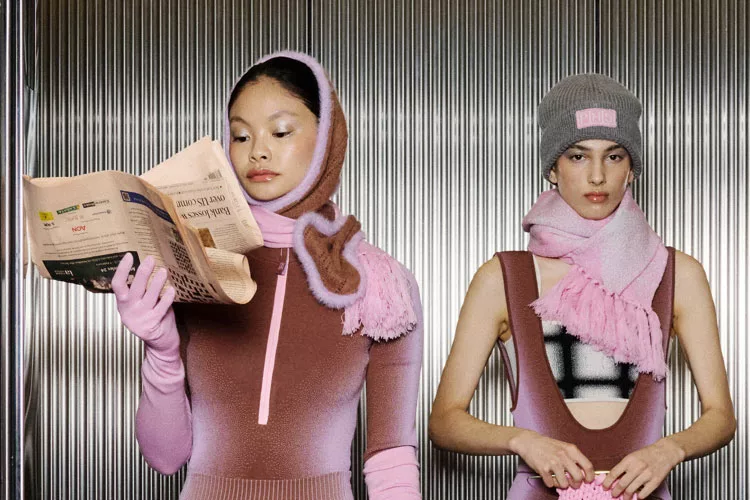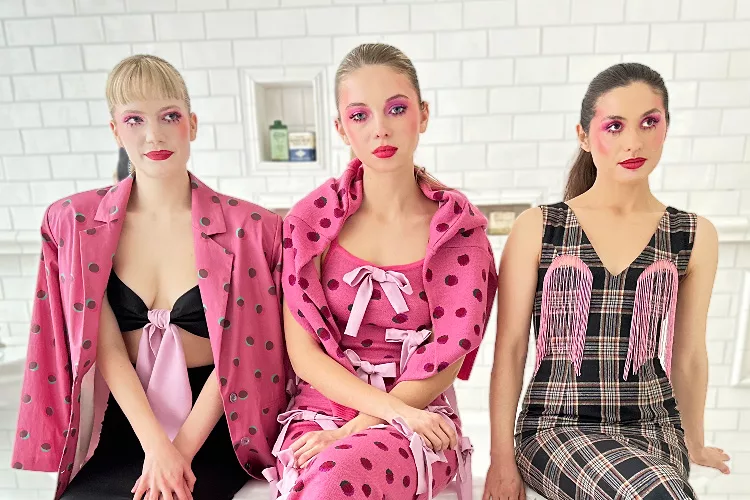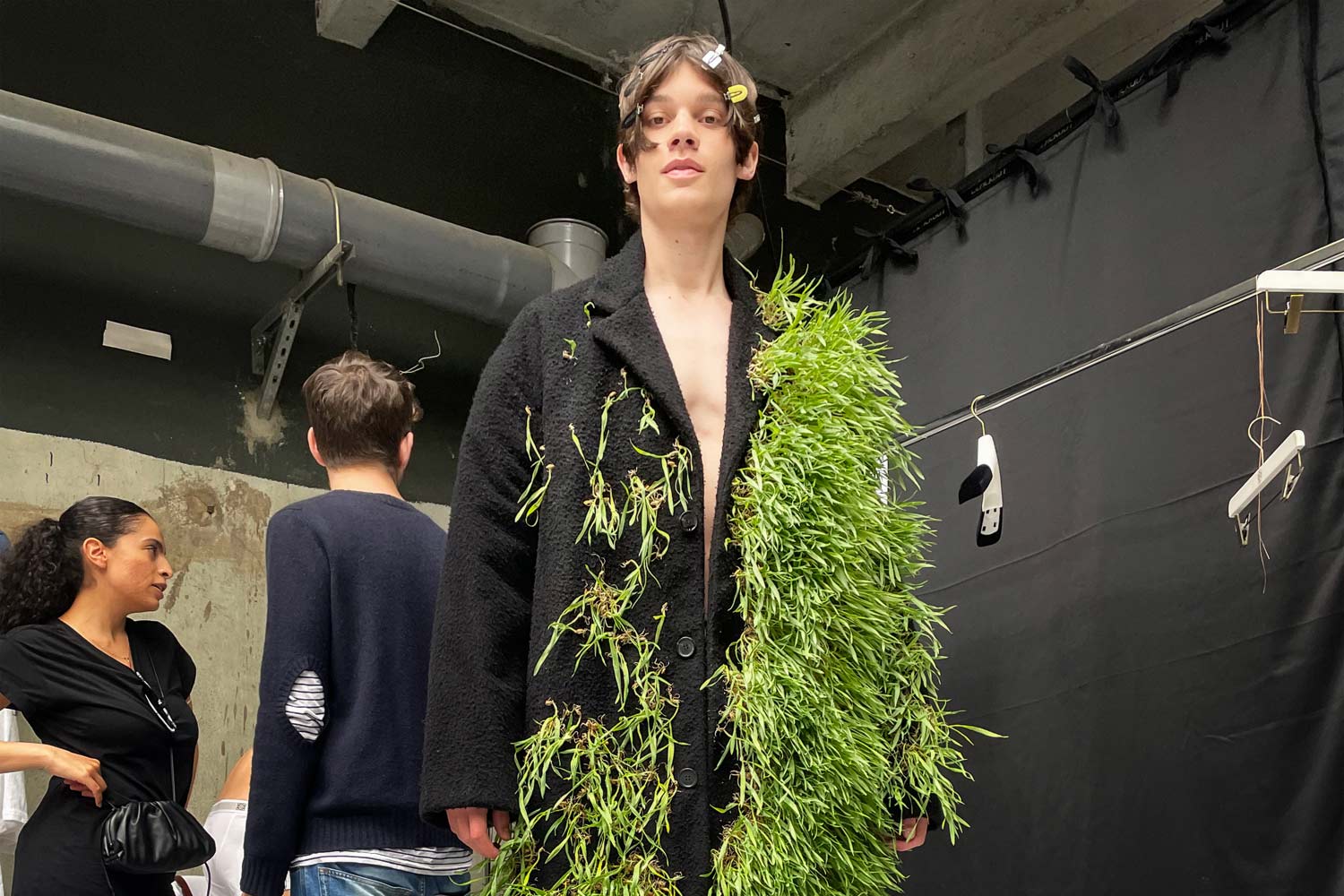
Fashion is getting more and more innovative, and Anderson’s Loewe menswear 2023 undoubtedly is an example of that. On the Metaverse runway, viewers saw living greenery – chia plants and cat’s wort – made to sprout from trainers, tracksuit bottoms, jeans, coats, a scene never witnessed in fashion history. Meet Paula Ulargui Escalona, the bio-designer behind the innovative collaboration.
Paula is the first designer to gain traction growing live plants on clothes. The Madrid-based designer has been using tiny plants to convey a powerful message: humans must recall a connection with nature, and we must pay respect to nature before it’s too late. Growing up in a household of artists and architects, Paula is an advocate for originality of ideas, and persisting in pushing such ideas to visibility. She is a firm believer in finding one’s own voice and trusting one’s own vision instead of conforming to established rules.
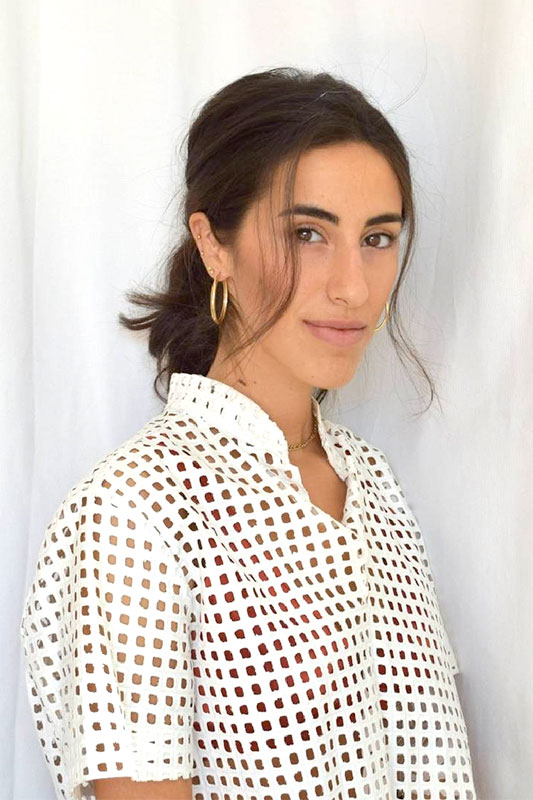
When you know your values and your message, when you understand that message is what this industry needs, it’s going to take you far.
I got to where I am today because of my deep and personal connection with all the plants I nurtured. It’s hard for people to imagine the devotion required.
Jacqueline Pham/NKM: Hi Paula! Congrats on your recent collaboration with Loewe Spring Summer 2023 menswear show! Can you tell us how the collaboration started?
Paula Ulargui Escalona: Well somebody from Loewe reached out to me via the mail address I put up on my website. I was checking my mail inbox and there was this request to collaborate. I was like “Oh okay..” Then I looked at the mail address and it had Loewe as the domain name, and I was like “WHAT!! I can’t believe it, this is amazing”
How could you sprout living plants on the model’s clothes?
I provided the plants with nutritions, and I had to attend to them day and night to keep them growing. The real challenge was Loewe’s last minute change. They wanted me to grow plants on menswear instead of women’s wear, which was what I was initially assigned. So I literally had to flip my plan upside down: instead of going for plants that are flowery and feminine, I switched to all the sharp-looking, more masculine species and all that jazz, you know.
I had to grow the new plants 10 days before the polaroid shoot. And it was the first runway show that I’d ever brought live plants on! One of the toughest parts of the job was planting on shoes – gravity sure didn’t help. What’s worse was that I had to do all this in the middle of a heatwave in Paris. 42 degrees Celsius (107 f) is definitely not the condition for sprouting!
So the whole process was long, intense, and stressful, but also beautiful and super fulfilling. I loved seeing the plants get taller, and the shoes seemed to “grow” in size as each day went by.
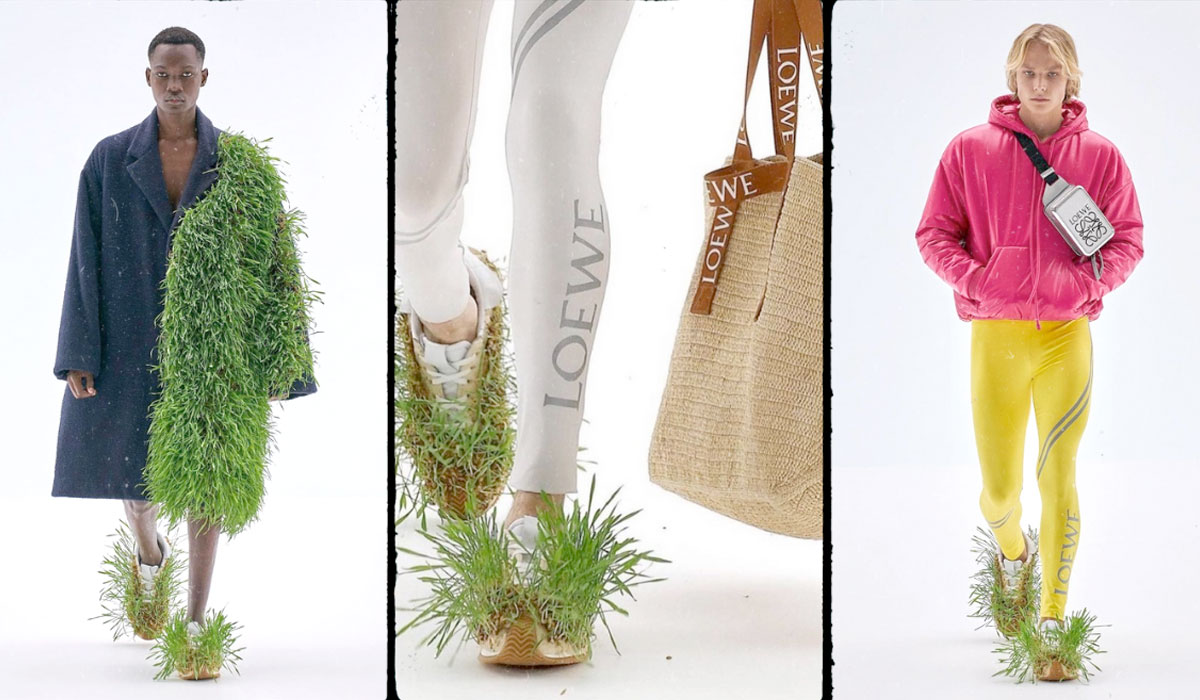
But you nailed it! It’s a character building moment, that’s what we call it.
Yeah. But I think it’s more about respecting the rhythm of nature than about me. At the end of the day, you’re growing nature, so a lot of things aren’t in your control. There are so many parameters determining the growth. This makes it different from, for example, craftsmanship where the amount of hours and dedication are totally within your control. But plants, they have their own rhythm; so you have to adjust your life to that.
How did you first start in the fashion industry?
Well, I always knew I was going to do something related to fashion and design. In my family, there are artists, and architects, all of whom were involved in the fashion industry in a way. Fashion grew on me. When I was small, I would go to mom’s studio to paint and draw. Little by little, I started experimenting on mannequins.
Actually I wasn’t sure I was going to pursue fashion design because I never liked the way the industry works. So it was hard for me to decide if I was going to follow fashion. After a year at university, I almost dropped out because I felt not connected to the values of the school and the industry. But then I discovered sustainable fashion, and it has kept me stay and passionate about designing ever since.
This project, “NATURALEZA SIMBIOTICA”, was a super important milestone to that passion for sustainability. I got to where I am today because of my deep and personal connection with all the plants I nurtured. It’s hard for people to imagine the devotion required: I spent many hours in the studio checking how they grow, what they need, how to help them on each step of development etc. I know it sounds banal but it was actually super magical, because it helped develop that connection. Through that visceral connection, I understood how the plants work and how we can live with them in a more respectful way. Therefore, the project was challenging but it fulfilled all my needs in both an artistic way, and a personal way.
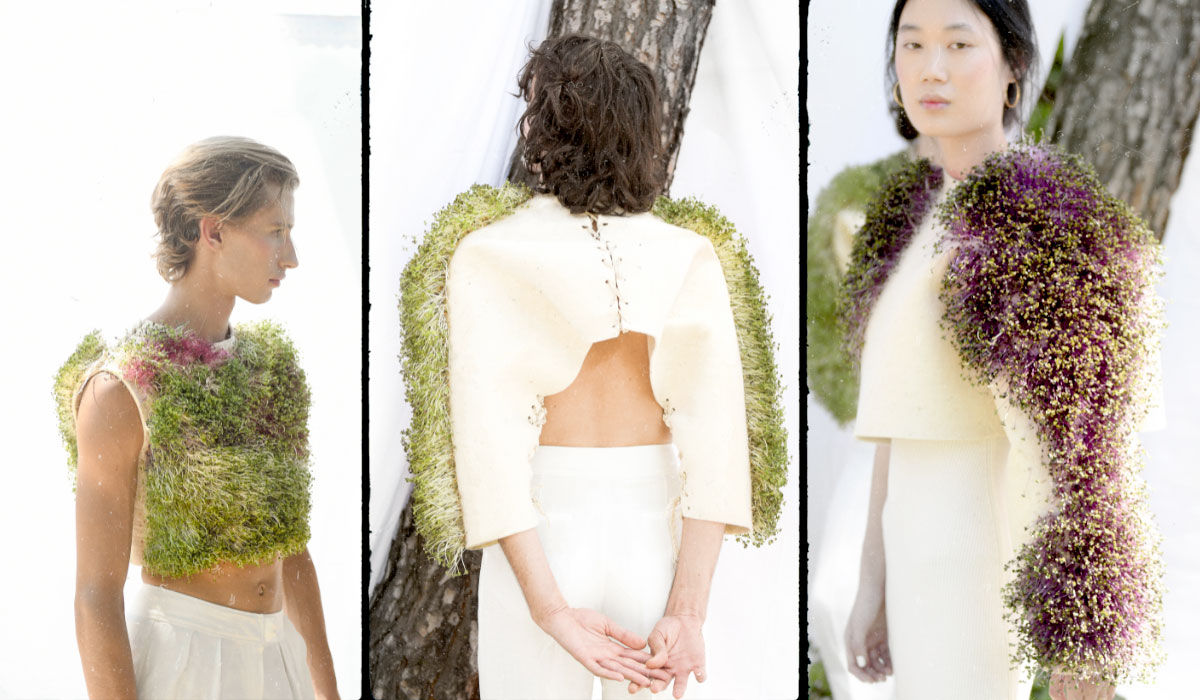
I suddenly thought of how it has been scientifically proven that connection to nature is not optional but fundamental for healthy human growth. The lack of such connection that is prevalent in modern society is unnatural, and it is causing all sorts of mental health problems. That’s why I love the philosophy behind the work you did in “NATURALEZA SIMBIOTICA” (Symbiotic Nature). Why do you choose fashion as a means to recall a raw connection with nature?
The reason is exactly what you’ve just said. My message is simple: sustainable fashion is a must; and we need to understand nature to respect nature. I did that by creating pieces where you can actually feel nature grow on you and feel that connection directly.
The “NATURALEZA SIMBIOTICA” collection was inspired by the Anthropocene era. Immediately after learning about the very definition of it, I knew that this is wrong. As humans, we have decided that we control nature and can do anything we want with it. But the truth is the power of nature is much higher than we can ever think about.
So I learned the way nature works, and the way the plants grow. Out of this process I have found out so many things that can be applied to the way we live and grow as society. That’s beautiful.
And just like what you said, deep connection to the planet must be recalled. Back then our ancestors used to look at the grass, touch the soil, and taste the temperature of the rivers to understand and predict weather events. But now we have lost that sacred connection. For us nature means decorative things for our houses.
Connection is what gives us power. Nowadays many prioritize individuality and chase material wealth. But understanding that we are just one thread of the big tapestry gives people power, because we know we are deeply rooted in the strength of our community, of nature. This is especially true when people realize they cannot control everything that comes our way. When we’ve lost touch with nature, we’ve lost touch with our inner source of power which stems from the fact that we’re children of the earth.
Exactly! How could we get back to that sort of connection? It’s so sad that we have felt indifferent, and separated from nature all this time, despite the knowledge that this connection is not just philosophical, but also scientific. We are essentially made up of the same biological, and chemical elements that make up the plants and animals.
Yes! That’s why I am so happy the Loewe collaboration happened because that gave you immense exposure, and visibility to your message. You are also currently working at Inditex? (editors note:Inditex is the parent company of fast fashion brand Zara)
Yes, I am a sustainability researcher/analyst at Inditex, in charge of sustainable fabrics and innovation. I know so many people take this as something that contradicts my work ethic – sustainable fashion. But I see it as something in the same vein: I am directly targeting what is causing the most damage, and I am still creating more sustainable solutions to fashion.
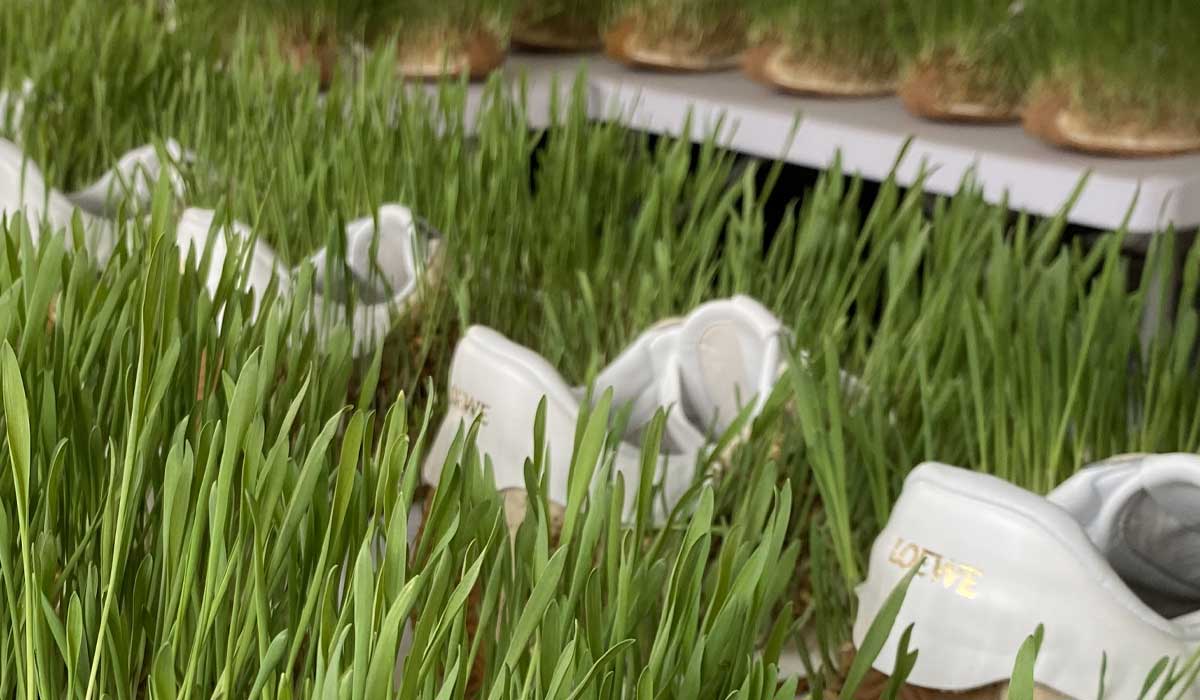
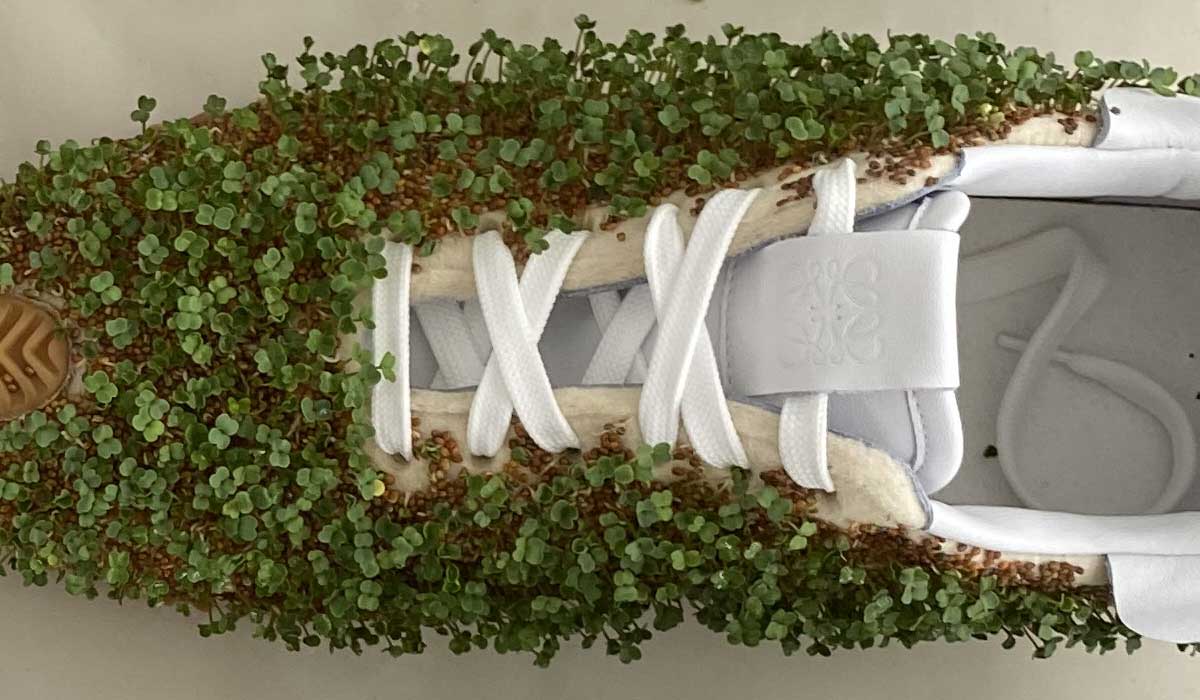
Great approach. Big companies hold a large power in the market, so a small change in those companies can initiate change on a global scale. Where do you see fast fashion companies can help in the reduction of global fashion carbon footprint?
I cannot share much about all the work that we do but I can openly say that we’re doing so much. It’s not that we are indifferent to the problem; it’s just that it’s hard to implement change so quickly. All the fast fashion companies at Inditex are working very hard to improve product quality towards higher levels of sustainability and recyclability of fibers. Lots of innovations are under way, too. For instance, Zara and Inditex have helped two startups who recycle cotton and make new viscose out of it. Their scale was super small, but with the investment, they have been able to complete their production. This innovation can greatly reduce the amount of each type of fiber we use.
It takes time. It’s true we are already late in paying appropriate attention to sustainability, but at least now there’s a movement. I remember when I started my fashion degree, when I talked about the idea of sustainable fashion, people were like: “What the hell? That’s ugly.” And now everyone is talking about it. After a 5-year difference.
It’s important to realize that sustainable fashion is still very new. It’s super complex to understand all parameters to determine how sustainable you actually are. You need to be super careful with so many details. It’s easy to think you are sustainable by using X fiber but then after taking in the transportation of the materials or the machines, your carbon footprint may end up being higher.
To reach what’s considered sustainable, there need to be so many trials and errors. We’re constantly learning how to improve. But I can assure you the process is in place, and there’s no going back – we cannot maintain these huge production with no sustainability in mind.
I totally understand. Fashion is a long supply chain with many stakeholders involved. And we’ve only discussed the supply side of the equation. What about the demand side? In your opinion, how can we encourage consumption towards more environmentally-friendly fabrics?
The customers definitely hold the ultimate power. Whatever they’re willing to pay, the industry follows. Therefore, there needs to be a demand for high quality products from the buyers.
Everyone in our society needs to realize the importance of sustainable fashion choices. Because strong demand will not only push Inditex, but also all other smaller companies within the industry to produce more sustainably. Inditex and other big companies have so much power and so many tools to make it happen. But then there are many other companies who don’t even care about it. In my industry, I understand the damage, but to some people in other parts of the world, they don’t see fashion as that. They couldn’t care less about carbon footprints from what they wear. This is a moment in time where we need to use our collective efforts to try to communicate the message, so that customers keep asking for better fashion.
Having a strong message was also the reason behind my project “NATURALEZA SIMBIOTICA”. I tried to use something so eccentric that it immediately grabs people’s attention, a message so clear that it holds people’s attention.
For the project that I did with Loewe, everyone in the team agreed that our message would focus on nature and sustainability from the first moment, which was amazing. When I shared my idea, everyone thought it was such a clear and strong message. The idea of growing plants on clothes also challenged the usual perspective that sustainable fashion designs cannot be beautiful or fashionable.
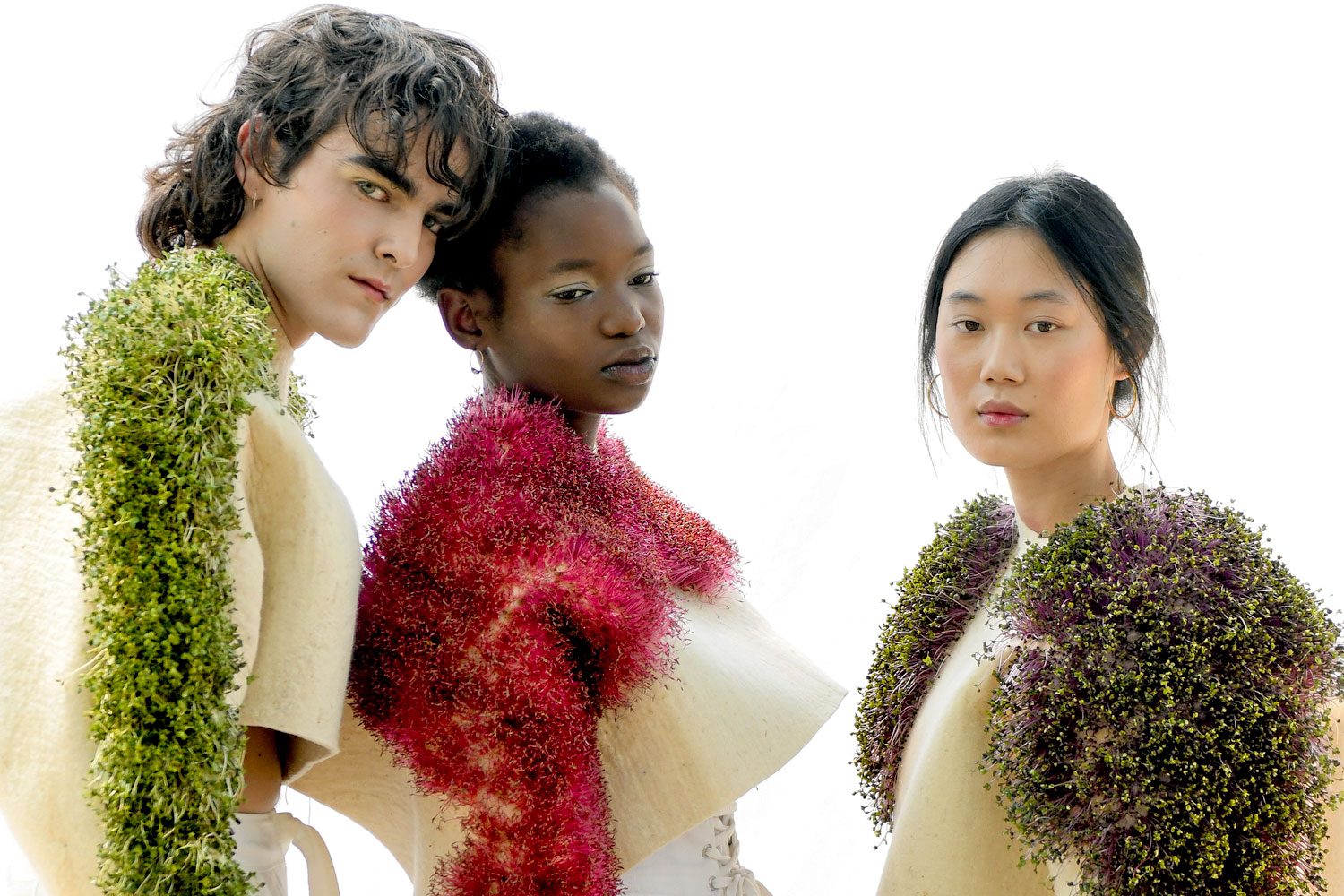
Your conviction and vision is admirable. Especially, considering how you talked about how 5 years ago everyone really doubted your designs. Where do you find the strength to keep your belief in your vision?
I’ve never had any problem with having belief in my vision. As I’ve told you earlier, my family all design. They supported me completely with whatever I wanted to do. Maybe other families who don’t like their kid’s to study fashion. Yeah it’s true that other people ridiculed my idea of growing plants on clothes. But it’s not that they were opposed to the idea, they were skeptical about it. They would imagine I would put leaves on intimate body parts and then that would be it.
I’ve always received so much support and I’m also super thankful to all the media. In the beginning, when I first posted the photo of my first project, which was 2 years before the Loewe thing, so many magazines and press started reaching out to me. I was so surprised. Because back then I was a nobody; I had no followers and had never been a social media girl. That’s also something I think I need to spend more time on, speaking more about the things I love the most. That I was approached by the press was amazing but that really reinforces the idea that they just really want something new – new messages, new projects, new points of view.
Message for young independent creatives who wish to follow unconventional paths?
There is this message that I always try to communicate to young designers. I think it is very wrong to think that as young designers we don’t have the power to change the industry. We do!
When you know your values and your message, when you understand that message is what this industry needs; and it is strong and has to be spread, it’s going to take you super far. I think the paradox that gets a lot of young designers confused and scared is that the fashion industry is very hard to break into: it is very competitive, and you need a lot of money to start. But it’s true we do have a lot of power and it’s vital that we believe in ourselves.
Another thing I would ask new designers to do is first, to really understand and carefully control the materials they use, and the impact that they create, to the smallest detail. 38% of the carbon footprint of the entire product chain is in just the textile process. So we must think how to improve, and then little by little, explore and try new things. And have faith that your work will get recognition, because the industry is moving in that direction. I can say from the point of view of someone working in a big corporation like Inditex, I can see everyday so many new materials are being created, and we are willing to put money on that. Secondly, from the artist’s point of view: have a clear message of the problem which needs to be solved. If your message is strong and you’re a visionary, your message will be heard. Explore!
Super profound. Then how do you keep your vision alive throughout all hardships? From the doubt when you first started to the last minute change at Loewe, you never complained and just pushed through.
Passion surely helps. The push for better understanding and appreciating our planet is my passion. It gives me energy. It keeps my integrity. Even in everyday life, I’m the typical friend that will constantly be telling you to recycle, take the trash out, to reconsider the amount of things that you buy, etc. Yes, I’m that annoying friend.
Keep on being that “annoying” friend! Thank you Paula for this amazing conversation and sharing your vision and insight with us. I hope you keep that invaluable passion alive because it’s rare and so much needed in this day and age. You’re an amazing visionary and we hope to see more of you in the future.
–Jacqueline Pham
Related Articles
TômTex Vegan Leather is Gorgeous and Eco-Friendly
Meet Vera Banas: ANDEL co-founder working to change the future of fashion
PANGAIA’s Material Innovations Excite Us – Here’s Why
It’s not “fast fashion” vs “sustainable fashion” but this instead…
Culture Dose | Radical Matter | Neri Oxman | Sounds of The Forest



